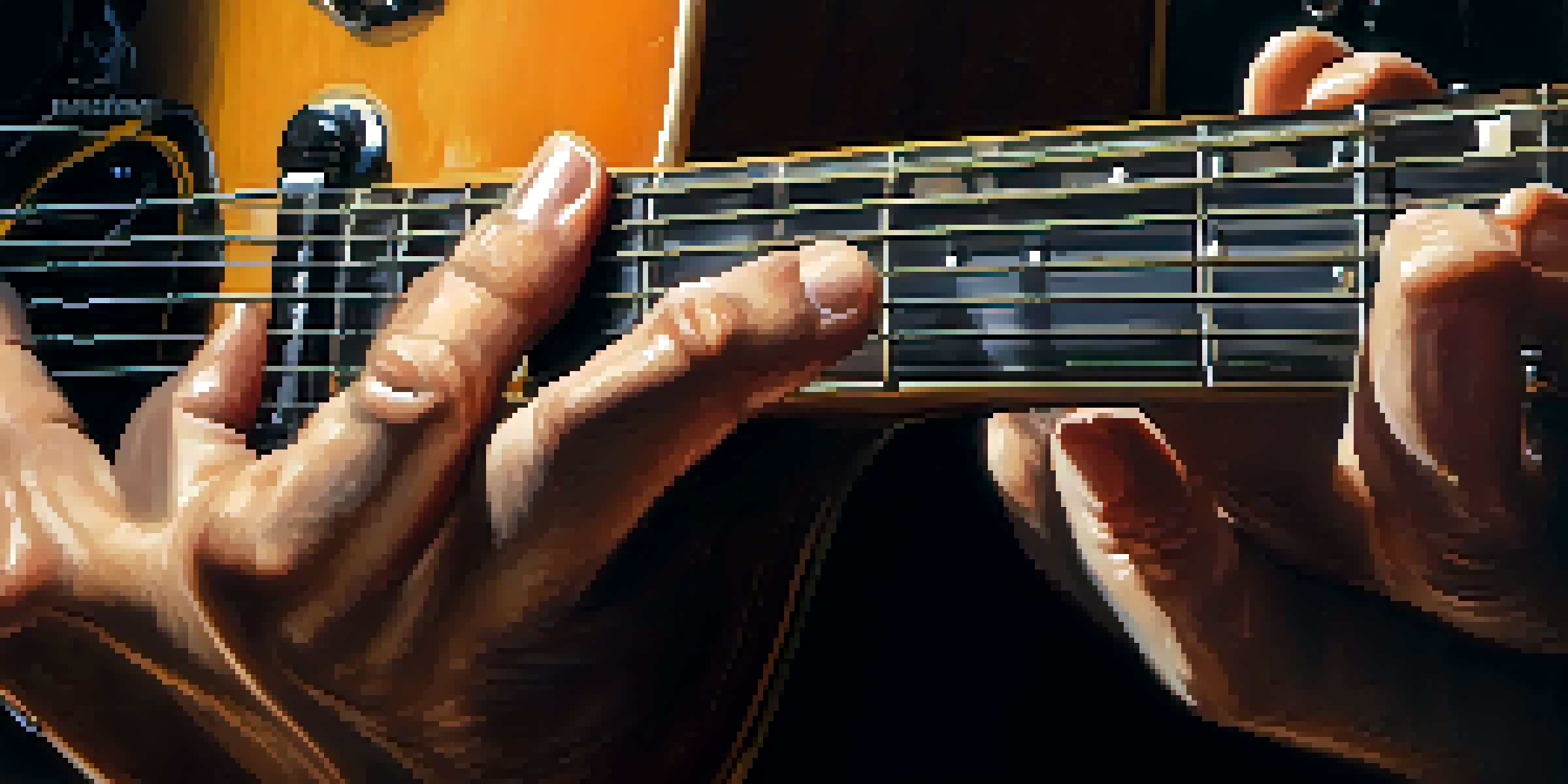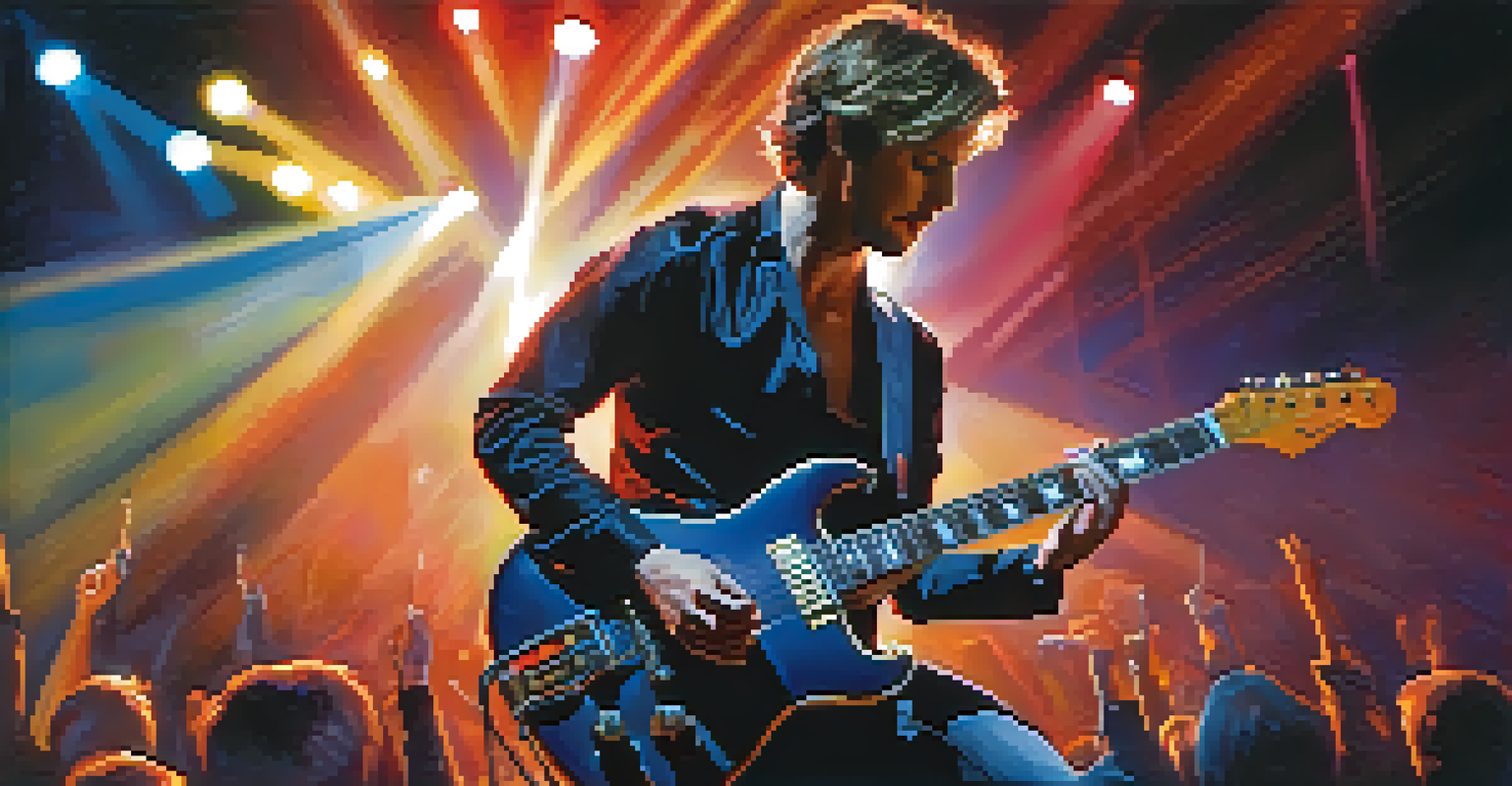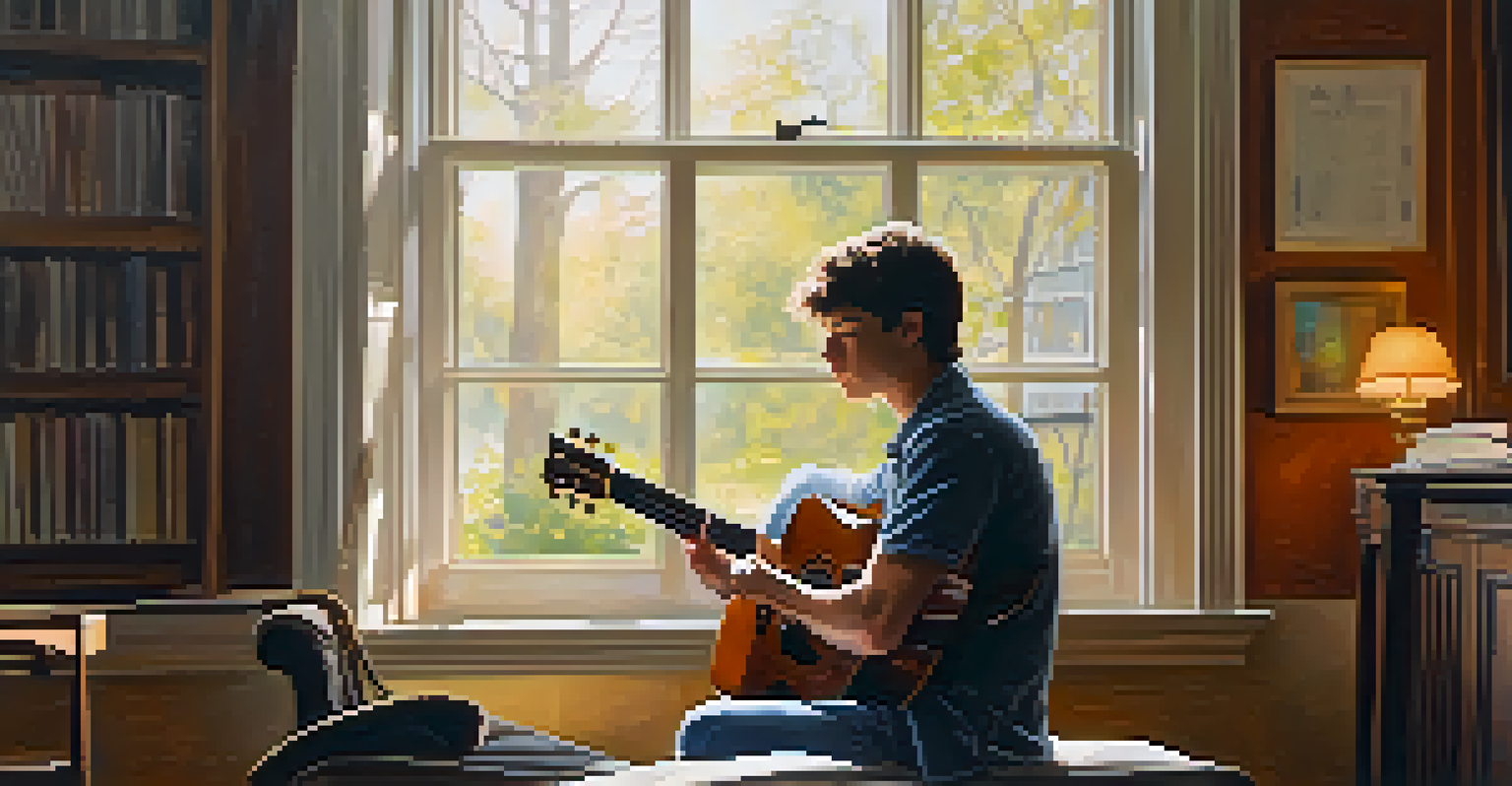Understanding the Role of Vibrato in Guitar Solos

What is Vibrato and Why is it Important?
Vibrato is a technique where the pitch of a note is slightly varied, creating a rich and expressive sound. This subtle fluctuation adds depth to guitar solos, allowing players to convey emotions that straight notes might not capture. Think of vibrato as the musical equivalent of a painter adding texture to their artwork; without it, the piece can feel flat and lifeless.
Vibrato is the soul of the guitar. It is the voice of the instrument, giving it life and personality.
In guitar playing, vibrato can be achieved through finger movement, bending the string back and forth. This technique is particularly effective because it mimics the natural nuances of the human voice, connecting listeners on a deeper emotional level. When a guitarist employs vibrato, it’s like they’re speaking directly to the audience, sharing their feelings through sound.
The importance of vibrato in solos cannot be overstated. It helps to create a signature sound that distinguishes one player from another, making solos memorable. Just as a unique brushstroke can define a painting, a guitarist’s distinctive vibrato can make their solos stand out in a crowded musical landscape.
Types of Vibrato Techniques for Guitarists
There are several types of vibrato techniques that guitarists can use, each imparting a different character to the music. The most common is finger vibrato, where the guitarist uses their fretting hand to bend the string back and forth. This technique can be subtle or pronounced, depending on the desired emotional impact.

Another popular method is wrist vibrato, where movement comes from the wrist rather than the fingers. This technique often produces a smoother, more fluid sound, which can be particularly effective in slower ballads. It's similar to how a painter might use a different brush to achieve a specific effect, showcasing the versatility of vibrato.
Vibrato Enhances Emotional Expression
Vibrato adds depth to guitar solos, allowing players to convey emotions that straight notes might not capture.
Lastly, there’s arm vibrato, which involves larger movements that can produce a more dramatic effect. This technique is less common but can be powerful in certain styles, such as rock or blues. Understanding these various techniques allows guitarists to choose the one that best suits the mood of their solo, adding layers to their performance.
When to Use Vibrato in Your Solos
Timing is everything when it comes to using vibrato in guitar solos. It's most effective when applied to sustaining notes, as this technique can prolong the emotional impact of the sound. Imagine holding a beautiful note, then gently shaking it to add life and vibrancy; that’s the magic of vibrato.
Music is the shorthand of emotion. Vibrato adds the nuance that words cannot express.
However, it’s essential to use vibrato sparingly. Overdoing it can make a solo feel chaotic rather than expressive. A good rule of thumb is to reserve vibrato for key moments in your solo, like when you hit a high note or during a climactic section, ensuring it creates the desired emotional response.
Listening to your favorite guitarists can provide insights into when to apply vibrato. For instance, notice how legends like Jimi Hendrix or B.B. King use vibrato to emphasize certain notes, transforming simple melodies into powerful statements. By studying their techniques, you can develop your timing and intuition for using vibrato in your own playing.
Tips for Mastering Vibrato Technique
Mastering vibrato requires practice and patience. Start by focusing on your finger vibrato; pick a note and practice bending it back and forth while maintaining control. This exercise helps you develop a steady hand and allows you to experiment with different speeds and widths of vibrato, much like an artist refining their technique.
Once you feel comfortable with finger vibrato, explore wrist and arm vibrato. Experimenting with these techniques can help you discover which feels most natural for you. Remember, just like learning to ride a bike, it may take some time to find your balance, but practice will lead to improvement.
Master Different Vibrato Techniques
Understanding various vibrato techniques, like finger, wrist, and arm vibrato, helps guitarists choose the right method for their music.
Recording yourself can also be a helpful tool in mastering vibrato. Listening back allows you to assess your technique and identify areas for improvement. It's like having a mirror for your playing—sometimes, you can’t see what you’re doing wrong until you step back and observe.
The Emotional Impact of Vibrato in Music
Vibrato is not just a technical skill; it has a profound emotional impact on music. The slight variations in pitch can evoke feelings of joy, sadness, or longing, much like a well-delivered line in a movie. When guitarists use vibrato effectively, they can connect with their audience on an emotional level, bringing the music to life.
For instance, consider how a slow, wide vibrato can create a sense of yearning or nostalgia. On the other hand, a fast, narrow vibrato might convey excitement or urgency. These variations can completely change the mood of a solo, similar to how a change in lighting can alter the feel of a scene in a film.
Ultimately, the emotional power of vibrato lies in its ability to express what words often cannot. When a guitarist pours their heart into a solo, vibrato becomes a tool for storytelling, captivating listeners and leaving a lasting impression. This is why mastering vibrato is essential for any guitarist looking to elevate their musical expression.
Famous Guitarists and Their Vibrato Styles
Many iconic guitarists have distinctive vibrato styles that define their sound. For example, B.B. King is celebrated for his expressive finger vibrato, which he uses to convey deep emotion in his blues solos. His ability to make every note sing is a testament to the power of vibrato in creating a signature sound.
In contrast, Jimi Hendrix was known for his aggressive, wide vibrato that added intensity to his solos. His unique approach made his music electrifying and often transcended traditional boundaries. By studying these legends, you can gain insights into how vibrato can shape your own style and express your musical identity.
Timing is Key for Vibrato Use
Using vibrato effectively during sustaining notes can prolong emotional impact, but it should be used sparingly to maintain clarity.
Additionally, modern guitarists like John Mayer and Joe Satriani employ vibrato in innovative ways, blending different techniques to create their own unique voices. Observing how these artists use vibrato can inspire you to experiment and find a style that resonates with you, allowing your solos to shine.
Incorporating Vibrato into Your Playing Style
Incorporating vibrato into your playing style involves experimentation and self-discovery. Start by integrating subtle vibrato into your solos, focusing on the notes that feel most expressive. As you become more comfortable, you can explore different techniques and intensities, tailoring your approach to fit your musical genre.
Consider the overall mood of your music when deciding how much vibrato to use. For instance, a gentle ballad may call for a softer, slower vibrato, while a high-energy rock piece might benefit from a more pronounced and aggressive style. Finding the right balance is key to enhancing your solos without overpowering the underlying melody.

Finally, don’t hesitate to let your personality shine through your vibrato. Each guitarist brings their unique flair to their playing, and vibrato is a perfect opportunity to express who you are as a musician. Embrace experimentation, and over time, you'll find a vibrato style that feels authentic and resonates with your audience.